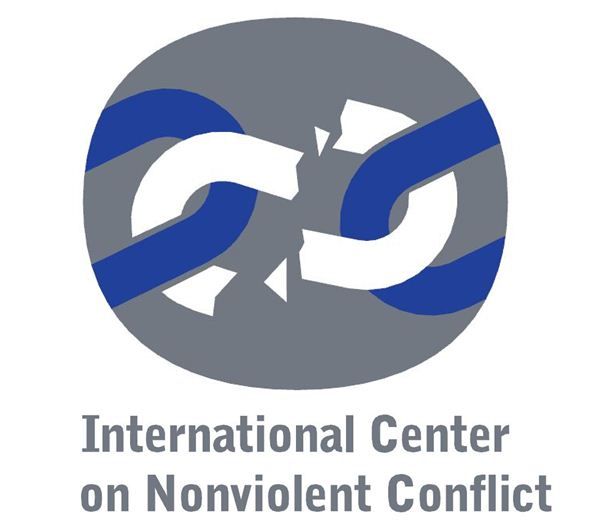You are here
Philippines
Analysis of a selection of predominantly nonviolent struggles from Russia 1905 to Serbia 2000, arguing against ‘the mythology of violence’. Some of the case studies are standard in books on civil resistance, others – for example the 1990 movement in Mongolia – less familiar. Each chapter has a useful bibliography. The book arose out of a 1999 US documentary television series ‘A Force More Powerful’, now available on DVD, and therefore includes, in the more recent cases, information from interviews.
Account focusing primarily on role of military and using extensive military sources, but also discusses the role of people power.
Leftist academic discusses sympathetically the role of the left and armed revolution in the countryside, but also explores the ‘legal, semi-legal and clandestine mass struggles in the cities’. Notes the creation by 1975 of a militant workers’ movement and the 1975 year-long wave of over 400 strikes, as well as networks among Catholics, professionals and students.
Observes that Cory Aquino’s movement seen as a third force by the US, though author rebuts US claims to have supported her before the fall of Marcos. Describes movement as ‘a genuine populist phenomenon’ with base in urban middle class, bringing onto the streets the lower middle class, unemployed workers and shanty town residents. Aquino avoided ties to the left, and did not need them to win the election, though – Bello claims – the left had paved the way for her ultimate success.
Compares democracy movements in Indonesia, Burma and the Philippines from a social movement perspective. Charts post-colonial evolution. On Indonesia, examines the Sukarno years, the 1965 coup and anti-communist massacres, initial student protests in the 1970s under Suharto, and the complexities of party politics in the 1980s and 1990s. Ch. 10 ‘Indonesia’s Democracy Protests’ (pp. 215-37) covers the build-up of resistance to Suharto, the role of the student demonstrations and the end of the Suharto regime.
Combines statistical analysis with case studies of unarmed resistance to argue that since 1900 nonviolent resistance campaigns have been strategically more effective than violent campaigns. Also analyses factors that promote success or failure of nonviolent campaigns. An earlier version of their overall argument was published as Chenoweth, Erica ; Stephan, Maria J., Why Civil Resistance Works: The Strategic Logic of Nonviolent Conflict International Security, 2008, pp. 7-44 , including useful case studies of East Timor, the Philippines and Burma 1988-1990.
The chapter ‘The Philippines: another Portugal?’, pp. 220-28, challenges the view that the Reformed Armed Forces Movement was ever a revolutionary movement, concluding ‘The primary thrust for the overthrow of Marcos and the installation of Cory Aquino came from the people themselves, notably the church and the middle classes’.
Looks at Global Justice Movement in a broad historical framework and relates it to case studies of earlier struggles in the USA, UK, France, South Africa, Algeria, the Philippines and Jamaica.
Includes material on role of local peace movement, nonviolence training and a 1983 statement on ‘creative nonviolence’.
The book examines how contemporary movements are using strategic nonviolent action to promote social change, covering a range of protests including climate change, immigrant rights, gay rights, Occupy and Black Lives Matter. The authors argue that nonviolent uprisings are becoming more common than violent rebellion, and look back to twentieth century antecedents in the Indian Independence and US Civil Rights movements, examine the nature of effective strategy and discuss organizational discipline. Their analysis includes the Arab Spring, but notes its discouraging implications.
Discusses role of corporations and governments in different parts of the world. Chapters 8-12 focus on resistance in Bougainville, the Philippines and Australia. Chapter 12 (pp. 195-206) covers the resistance to the Jabiluka uranium mine by the local Aboriginal people, supported by environmentalists.
Examines role of different types of opposition in ‘delaying, cancelling or reversing the privatization of water and energy’, including success in Nkondobe (South Africa), Paraguay where parliament voted in 2002 to suspend indefinitely privatization of state-owned water and Poznan in Poland in 2002, and failure of campaigns in UK, Chile and Philippines.
By demolishing the myth that feminism originated in the West, Kumari Jayawardena presents feminism as it originated in the Third World, erupting from the specific struggles of women fighting against colonial power, for education or the vote, for safety, and against poverty and inequality. Gives particular attention to Afghanistan, China, Egypt, India, Indonesia, Iran, Japan, Korea, the Philippines, Sri Lanka, Turkey, and Vietnam.
To look at a brief extract of the book see also https://www.versobooks.com/blogs/4018-feminism-and-nationalism-in-the-third-world
Study of women’s rights movements in Middle East and Asia from 19th century to 1980s, covering Egypt and Turkey, China, India, Indonesia, Korea and the Philippines. Argues feminism was not an alien ideology but indigenous to these countries.
Emphasis on role of military and Catholic Church.
Discusses role of Benigno Aquino and Corazon Aquino’s involvement in politics; pp. 105-23 focus on mutiny and popular protests.
Discusses the constitutional problems of Philippine democracy and the role of an elite above the law.
Includes assessment of nonviolence.
Analysis of nonviolent action and case studies of people power in Asia, Eastern Europe, Middle East, Central and South America and South Africa.
Discusses resistance of slum dwellers in Philippines to eviction, but also their role in providing cheap workforce undermining organized labour.
Discusses if the role of civil resistance from 1983 onwards ‘derived from a principled rejection of violence, or from particular strategic, moral, and cultural considerations’. Suggests all relevant to the moderate coalition against Marcos. Also discusses crucial role of US government – though divided – and notes the continuing problems facing Philippine democracy.
Explores the struggles of women during different historical events and political regimes in the Philippines, including during the Spanish colonization, Marcos dictatorship, and the current challenges under the administration of President Duterte. The study hopes to enhance conversations and possibilities for collaboration among new generation of feminists and experienced women activists at the national and global fronts.
See also: Gabriel, Arneil G. (2017) “Indigenous women and the law: The consciousness of marginalized women in the Philippines”, Asian Journal of Women's Studies, Vol. 23, no. 2, pp. 250-263 and https://www.cbsnews.com/news/international-womens-day-march-8-protests-amplify-feminism-in-asia/
Compares ‘unsuccessful’ and ‘successful’ movements against Socialist regimes (Tiananmen and East Germany 1989), against military regimes (Panama and Chile in the 1980s) and against personal dictators (Kenyan opposition to Moi and the Philippines struggle against Marcos). Draws some fairly brief general conclusions.
Designed as a textbook, it covers history, theoretical developments and debates about the results of nonviolent movements. It categorizes nine types of nonviolent action, which are illustrated by case studies. A separate chapter explores key issues of why and when sections of the armed services defect from a regime challenged by a nonviolent movement.
Men have an important role as allies in reducing discrimination against women. Using the Social Identity Model of Collective Action (SIMCA), the authors examined whether men's identification with women would predict their allied collective actions. They also examined whether men’s identification with their own group would reduce their willingness to improve women's situation. They found that moral beliefs and a sense of group efficacy made men more likely to join in collective action to combat discrimination against women. They also discuss the possible role of norms and concept of legitimacy in society in explaining the pattern of results.
Brief but illuminating account, by the founder and chair of the National Women’s Movement for the Nurturance of Democracy in the Philippines, of the role played by her organization and two related civil society groups between 1983 and 1986.
Analysis of Estrada regime and the protests that led to his overthrow and replacement by Aroyo. The article is also a critique of western commentators who deplore the popular uprising, and an attack on a neoliberal conception of democracy. The author concludes that the 2001 rebellion was ultimately an elite controlled process, transferring power to a different faction of the elite, but also a model of popular mobilization and empowerment.
Studies cover Peru, India (Orissa), Philippines, Nigeria (the Niger Basin), Chad and Cameroon, as well as Australia and Canada.
Seeks to address the lack of explicitly comparative analysis of how nonviolent methods promote political transformation. Examines success of the anti-apartheid movement in South Africa (1983-90), and pro-democracy movements in the Philippines (1983-86), Nepal (1990) and Thailand (1991-92), and explores failure of such as movements in China (1989) and Burma (1988). Lists major actions in each movement. Includes analysis and criticism of ‘consent’ theory of power.
Examines role of various Protestant groups and stresses Christian basis of nonviolence.
An abbreviated and slightly modified version of Sharp’s general argument in The Politics of Nonviolent Action. Includes 23 brief case studies of campaigns from the Russian Revolution of 1905 to the Serbian people power of 2000 (some written by Sharp’s collaborators: Joshua Paulson, Christopher A. Miller and Hardy Merriman).
Chapter 5, pp. 95-122, ‘Social Movements enter the Twenty-First Century’, takes as its starting point the January 2001 text message in Manila, ‘Go EDSA, Wear black’ and goes on to discuss the relationship between social movements and communications technology with further details on unrest in Manila.
Comparative examination of student-led protest challenging governments in Asia since the Second World War, with a focus on Burma, China, Hong Kong, Japan, Taiwan, South Korea, Indonesia, Malaysia, Thailand and the Philippines
Examines the impact of anti-base movements on politics, and the role of bilateral military alliances influencing results of protest. Findings drawn from interviews with activists, politicians and US base officials in the Philippines, Japan (Okinawa), Ecudaor, Italy and South Korea. See also: , Anti-Base Movements in South Korea: Comparative Perspective on the Asia-Pacific The Asia Pacific Journal, 2010, pp. 39-73
Examines the impact of anti-base movements on politics, and the role of bilateral military alliances influencing results of protest. Findings drawn from interviews with activists, politicians and US base officials in the Philippines, Japan (Okinawa), Ecudaor, Italy and South Korea. See also: Yeo, Andrew , Anti-Base Movements in South Korea: Comparative Perspective on the Asia-Pacific The Asia Pacific Journal, 2010, pp. 39-73
A Guide to Civil Resistance
Volume One
Volume Two
 The online version of Vol. 1 of the bibliography was made possible due to the generous support of the International Center on Nonviolent Conflict (ICNC). ICNC is an independent, non-profit educational foundation that develops and encourages the study and use of civilian-based, nonmilitary strategies aimed at establishing and defending human rights, democratic self-rule and justice worldwide.
The online version of Vol. 1 of the bibliography was made possible due to the generous support of the International Center on Nonviolent Conflict (ICNC). ICNC is an independent, non-profit educational foundation that develops and encourages the study and use of civilian-based, nonmilitary strategies aimed at establishing and defending human rights, democratic self-rule and justice worldwide.
For more information about ICNC, please see their website.
 The online version of Vol. 2 of the bibliography was made possible due to the generous support of The Network for Social Change. The Network for Social Change is a group of individuals providing funding for progressive social change, particularly in the areas of justice, peace and the environment.
The online version of Vol. 2 of the bibliography was made possible due to the generous support of The Network for Social Change. The Network for Social Change is a group of individuals providing funding for progressive social change, particularly in the areas of justice, peace and the environment.
For more information about The Network for Social Change, please visit their website.










 esistance.info
esistance.info

